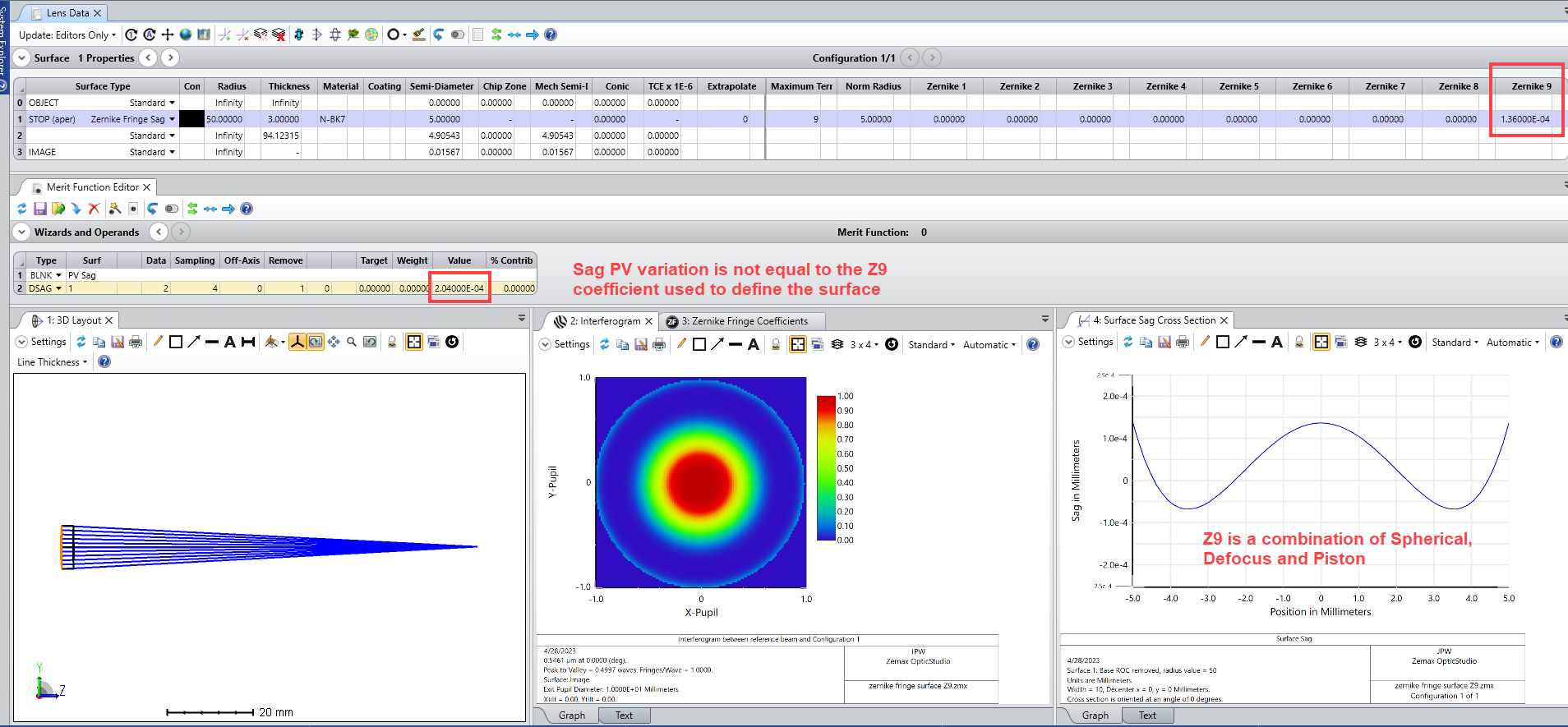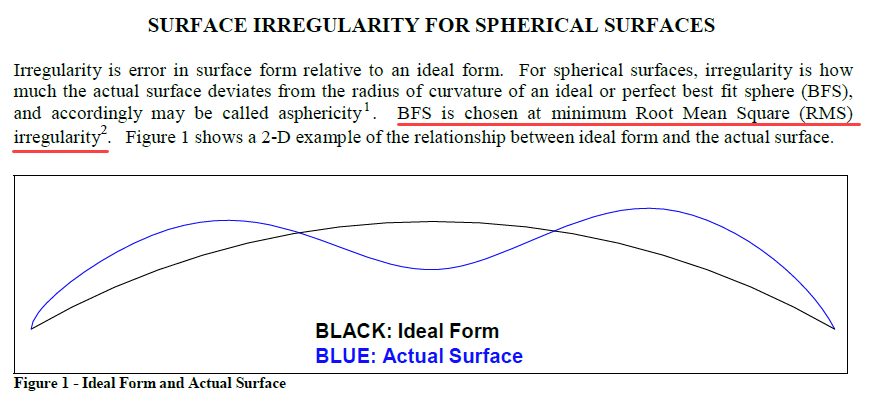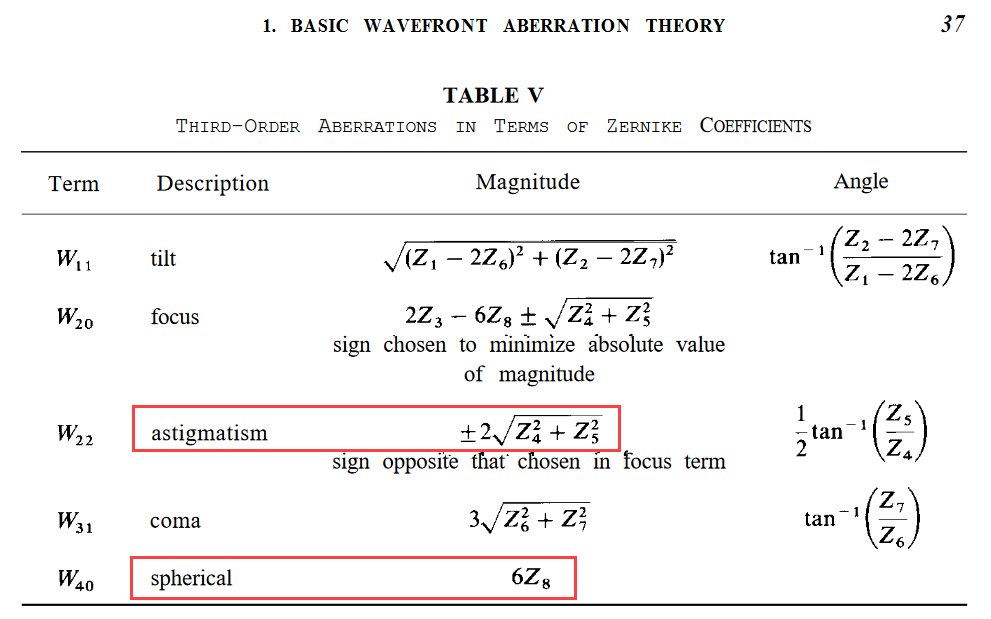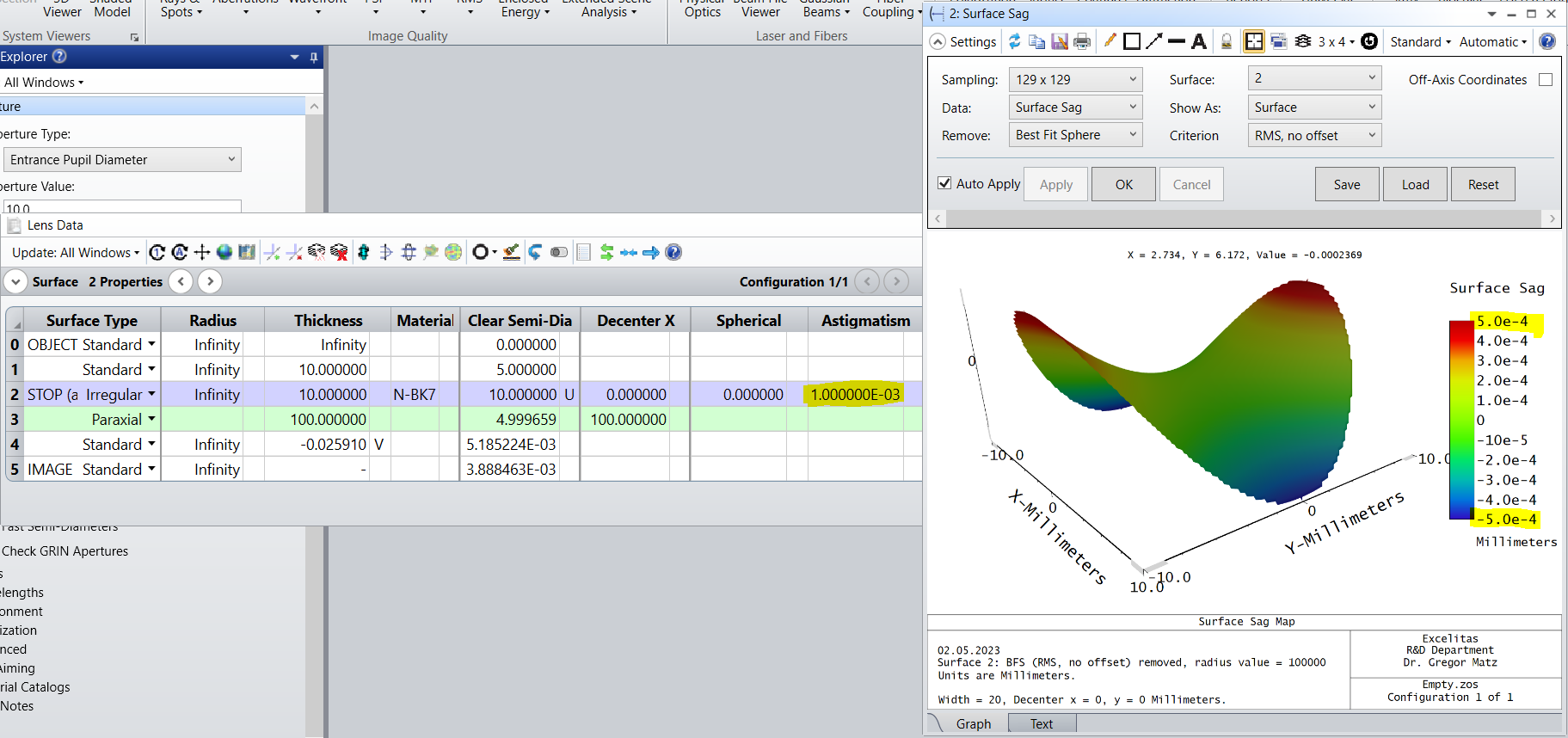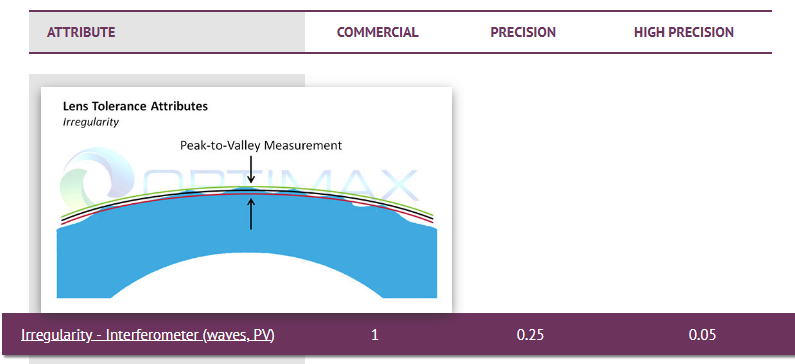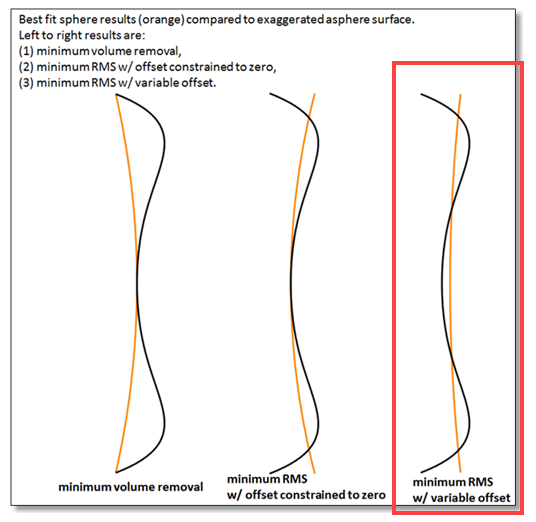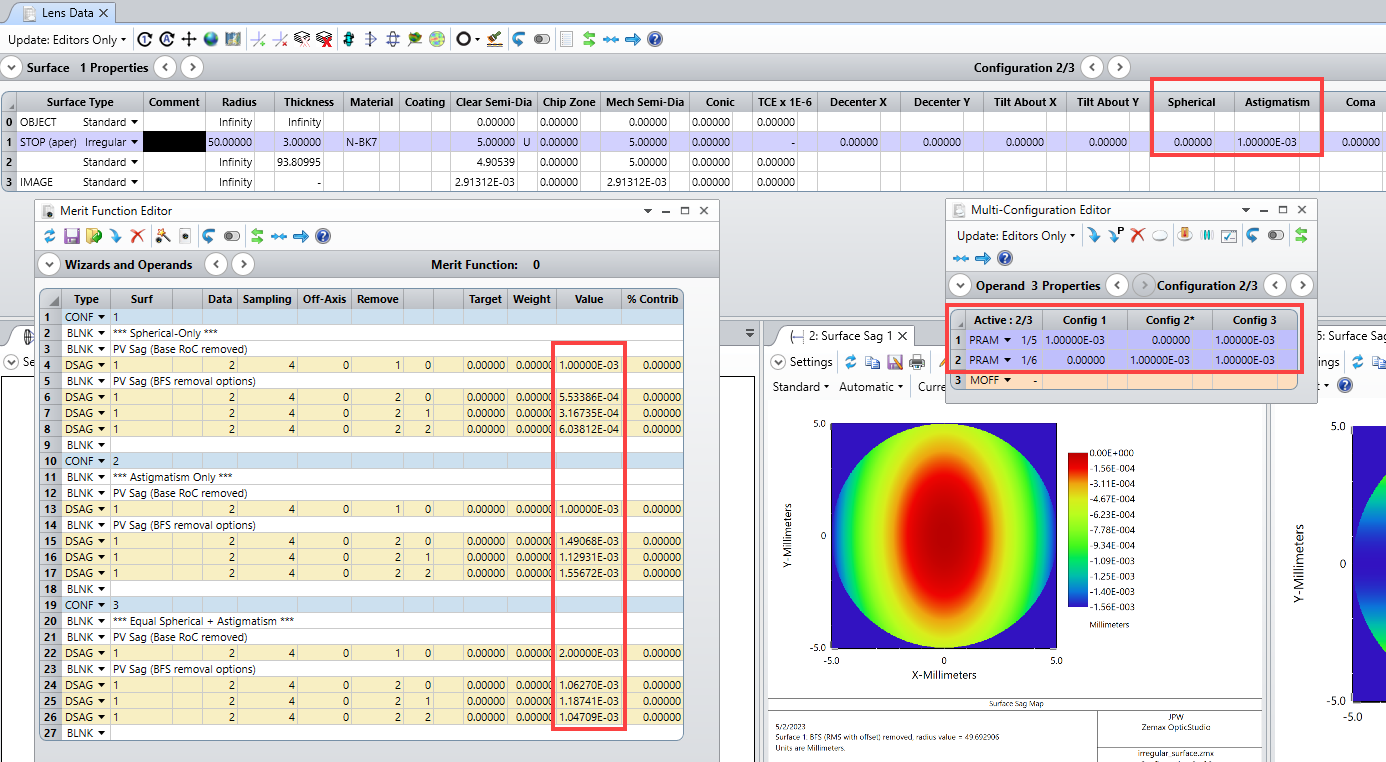Dear Zemax Community,
I have a question regarding the TIRR Operand in Zemax. The operand defines the sag of the surface in waves which is equally split in astigmatism and spherical aberrations. This idea is clear and often a good approach. The sag of the used irregularity surface is defined as dz=...+Zs roh^4 + Za roh_y^2 + Zc roh^2 roh_y (see Zemax-Manual).
Assuming, the TIRR is 1 ring with lambda equal 546.07 nm. This leads to 0.5 rings Asti and 0.5 rings Spherical. In PV this means 136 nm (=0.5 ring/2*546.07) Asti and Spherical and hence Zs=1.36e-4 and Za=1.36e-4 (due to the fact that roh is the normalized radius).
Related to the ISO10110-5, the sag of the surface is defined as 3/SAG(IRR,RSI). The IRR relates to non-spherical aberrations (for example spherical plus asti) and the RSI relates to rotational symmetric aberrations (for example spherical), both after removing the best fit sphere. In my example one might approximate this on the optical drawing as 3/-(1, 0.5) @e.
In fact, this seems to be not the same. Asti and spherical is evaluated (acc. to ISO) as the PV of the sag after the best fit sphere is removed. If one measures 0.5 rings of Asti @e, this relates to a PV of the surface of 136 nm. This is fine with the values listed above. Yet, if spherical aberration (with shape according to Z9) of 0.5 rings are measured, this relates to a PV of 136 nm but with the shape of Z9=6roh^4-6roh^2+1 and not with the shape of dz=Zs*roh^4. The prefactor infront of the roh^4 term is a factor 4 larger than assumed in the tolerance operand TIRR.
In other words: To my understanding, TIRR does not equally split Asti and Spherical but weights Asti by a factor 4 more heavy than spherical aberrations. Hence, if the RSI should be smaller than 0.5 rings, the TIRR should be set to 4 rings. In fact, this would lead to very large astigmatism simultaneously.
Is this definition intended? Or is this not inspired by the ISO10110? Is there a reason for this or do I misunderstand something?
Thank you and best regards!
Gregor



